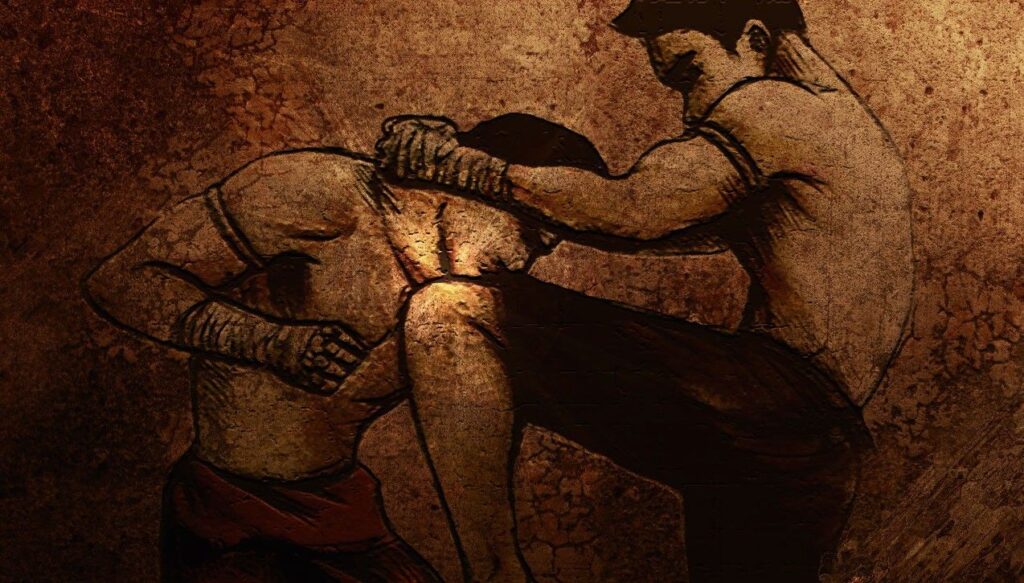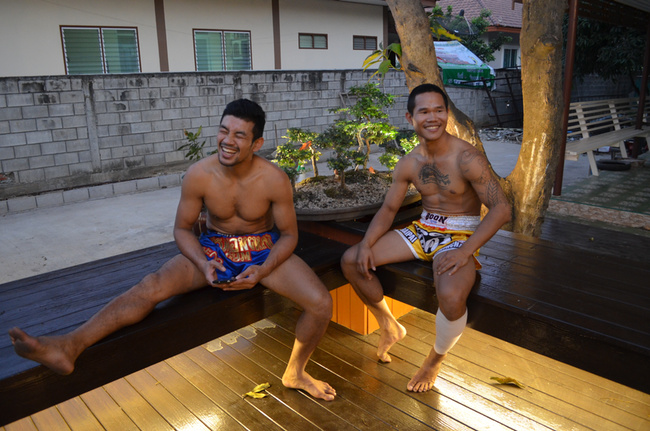The Diet of a Muay Thai Fighter
The Basic Approach
Training and fighting in Thailand is a full time job. Fighters will typically train in the morning and evening with a total of up to 6 hours per day and taking only one rest day each week. Because there is short breaks between training sessions, schedule fighters feeding times for optimal recovery and performance.
Below is what a typical day of training and eating:
- AM Training – Drink water with BCAA (branch chain amino acid).
- Post training am – Immediately after training, drink a post workout shake containing 25g protein, around 50g carbohydrates, and 15g fats.
- Breakfast – Within 1 hour, consume a meal with around 25g protein, 50-100g carbohydrates, 15g fats.
- During the day – In times of low activity, consume meals that are high in protein (50g), higher in fats (30g), while lower in carbohydrates (around 50g and mostly from vegetables).
- Pre training – If feeling low on energy pre-training, eat some fruit. Around 50g or 1 piece.
- During training – Drink water with BCAA (branch chain amino acid).
- Post training pm – Immediately after training, drink a post workout shake containing 25g protein and around 50g carbohydrates.
- Finish eating between 8-10pm – Main meal of the day is to be eaten around 1 hour after training. This meal should be high protein (50g), higher in carbs (100g) and lower in fats (15g)
- Extra meal: If your feeling hungry in the few hours before bed, he had the go-ahead to consume a protein rich snack like a 2 egg omelet or a protein shake.
The Calories
Working out calories for high performance “weight classed” athletes can be tricky. Training 5-6 hours per day puts a huge amount of stress on the body and demands a high food intake to supply your body with enough energy to handle the workload, recovery, rebuilding the body etc. At the same time you need to be careful calories are not too high that you won’t lose weight. Finding that sweet spot between sufficient energy and weight loss is an individual thing and something that requires individual experimentation.
Devide the 2300kcals into 2 high carbohydrate meals which were eaten after training, 1 lower carb meal which was eaten during the day in times of low activity, and 2 super nutritious shakes to be consumed right after training.
In total have 3 different menu’s covering baseline menu for standard training day which is 2300kcals, 3300kcals on refeed days, and 2286kcals on rest days with lower carbs and higher fats.
Regular Re-Feed Days
The human body is so smart and especially good at adapting. A good example of this is how after around 14 days of being in a calorie deficit, your body realizes it’s not getting enough food and will down regulate your metabolic rate, and slows or shuts down non-essential functions like hormone and reproductive function.
To avoid this happening, we scheduled re-feed days. Every 4-7 days, we increased your calorie intake x 1.5, and not more than x 3. So if you were on 2000kcals, you would bump it up to 3000kcals.
Similar to what’s commonly known as a cheat day, however cheat days are usually for other reasons like diet sustainability. Where’s re feeds are for the purpose of stoking the metabolic fire. This sounds counter intuitive to increase calories when trying to lose weight, but research demonstrates this will avoid metabolic adaption.
The Supplements
Although supplements are not 100% necessary for weight loss, they do help. Athletes like Muay Thai fighters who have short rest periods between training need all the help they can get to assist recovery and training performance. But forget “fat burners” and pre workout supplements, below is a basic list of highly researched supplements we use that have proven to be safe and effective.
- BCAA’s are taken during training – in water. This is to minimize muscle breakdown while on a low calorie diet and helps with the recovery process.
- Greens supplements are a heavily researched supplement that have proven to alkalize the body in times of rapid fat losses. This was taken 1-2 times daily in a shake.
- Amino/carbs workout drink is taken when training exceeds 1 hour. This is a mix of carbohydrates and amino acids supply the body with everything needed start the recovery process and minimize stress.
- Multi vitamin is taken twice daily after each training session. This is to replace lost vitamins and minerals lost during heavy sweating in training.
- Fish oil is taken at the rate of 1g per % of body fat for the first 4 weeks, then dropped to half that amount. Many studies confirm supplementing with fish oil will inhibit the production of fat cells.
- Whey protein supplement twice daily and immediately after training. . Usually combined with fruit, almond milk, coconut milk or water, coconut oil, greens.
Water Cutting Strategy
I know this is the part of the cut your all waiting to hear about: How to cut 9kgs (19.8lbs) in 8 days. There are some crucial steps which we used to manipulate our fighters bodies to rapidly lose water.
Carbohydrates
In fight week, to assist with our weight loss we adjusted his carbohydrate intake to around 50-100g per day. That’s around 2 cupped handful of brown rice each day, or 2-3 pieces of fruit. We never go below 50g of carbs each day. The 50g of carbs intake each day is predominantly for supplying the liver and brain with much needed glucose, not for running a marathon. When fighters ignore this rule they end up crashing hard in the final days of the cut.
Salt
As sodium binds to water in the body, temporarily cutting salt from the diet you will cause you to lose water. In the days leading up to the weigh, our fighters avoided all salt and high sodium foods.
Natural diuretics
When using rapid weight cutting techniques, we assist the excretion of urine by using a natural diuretic. In our diets we use diuretics like dandelion root and uva ursi leaf which are both safe and nothing like the harsh drug version diuretics.
Water loading strategy
This method involves increased water intake for short periods of time which leads to increase in urinary fluid losses for several days. Essentially a fighter will increase water, and then reduce each day until intake is zero by weigh in day.
Sauna
We finished off the last of the cut with a couple of short sauna session. Our fighters are able to lose the last 1.5kgs (3.3lbs) in a 20-30 min sitting. On the day of weigh in, we had the option of using the sauna if needed to make weight.
The Results
Our fighters can loose 1.5kgs (3.3lbs) of body fat in 3 weeks, then cut 9kgs (19.8lbs) of water weight during fight week. Then after he successfully weighed in at 72.5kgs (159.5), he followed a specific rapid recovery plan to bounce back up to 81.5kgs (179.5lbs) in less than 24 hours. The recovery process is arguably the most important part of weight cutting in combat sports.





































